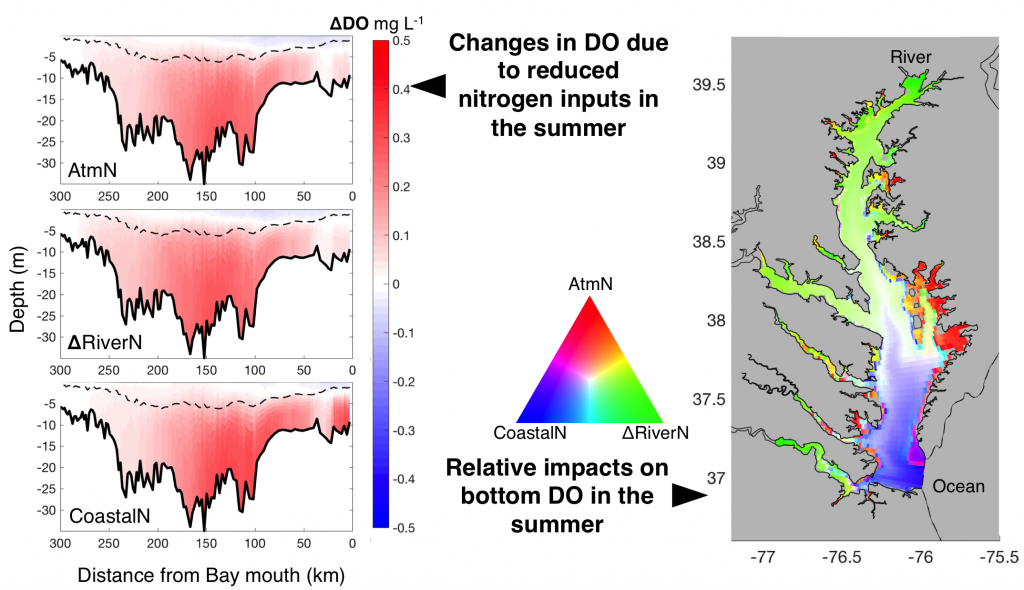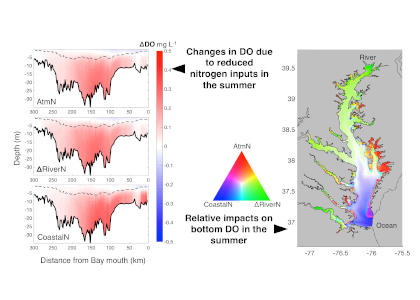How do atmospheric and oceanic nutrients impact oxygen concentrations in the Chesapeake Bay? Generally, researchers focus on how terrestrial nutrients impact hypoxia. The relative importance of river, atmosphere, and ocean inputs have not been quantified, largely because estimates of nitrogen fluxes from the atmosphere and ocean are limited.
A recent study in Journal of Geophysical Research: Oceans quantified the relative impacts of atmospheric and oceanic nitrogen inputs on dissolved oxygen (DO) in the Chesapeake Bay. The authors combined a 3-D biogeochemical model and estimates of atmospheric deposition from the Community Multiscale Air Quality model and interpolations of nitrogen concentrations along the continental shelf from the Ocean Acidification Data Stewardship Project. Atmospheric nitrogen deposition and coastal nitrogen fluxes most impact Chesapeake Bay DO concentrations during the summer when surface waters are depleted in nitrogen. Overall, atmospheric nitrogen deposition has about the same gram-for-gram impact on Chesapeake Bay DO as riverine loading. Although all three nutrient sources vary spatially and temporally, in the central bay, where summer hypoxia is most prevalent, coastal nitrogen fluxes and atmospheric nitrogen fluxes have roughly the same impact on bottom oxygen as a ~10% change in riverine nitrogen loading (Figure 1).

Figure caption: (Left) Four-year (2002–2005) average increase in DO in the summer by removing the atmospheric nitrogen deposition (AtmN), reducing the riverine loading (ΔRiverN) by ~10% (roughly equivalent to turning off the atmospheric deposition), and removing the nitrogen fluxes from the continental shelf (CoastalN). (Right) Relative impacts of the three nitrogen modification scenarios on summertime bottom DO.
These results indicate that two often-neglected sources of nitrogen—direct atmospheric deposition and fluxes of nitrogen from the continental shelf—substantially impact Chesapeake Bay DO, especially in the summer. Future study is needed to investigate the long-term trend of these relative impacts by continued coordination between modeling and observational work, such as applying higher-resolution atmospheric deposition products and integrating more in situ data along the model ocean boundary when they are available. These efforts will improve our understanding of the impacts of different nutrient sources on biogeochemical cycles in coastal water bodies.
Authors:
Fei Da (VIMS, College of William & Mary)
Marjorie A. M. Friedrichs (VIMS, College of William & Mary)
Pierre St-Laurent (VIMS, College of William & Mary)




